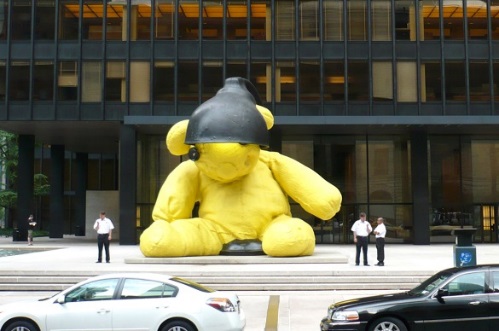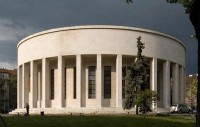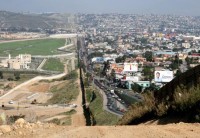Category: Exhibitions
Open Call for Papers
Saturday, March 8, Zagreb, Croatia
Conference Keynote Speakers
Vito Acconci, Artist, Designer
Franklin Boyd, Art & Finance Professor; Attorney, Entrepreneur, Collector
Session 1: Doubling Space
Keynote : Ana Hušman, Artis
Sonja Leboš, Artist
Bojan Mucko, Artist, Philosopher, Ethnologist
Selected Presentations: TBA
Session 2: Space as Asset
Keynote: Paolo Cirio, Artist Activist
Zlatan Krajina, Theorist, Goldsmith’s
Iva Marčetić, Architect
Tomislav Tomašević and Teodor Celakoski, Founders Right to the City and Green Action
Selected Presentations: TBA
In conjunction with the exhibition Borroworrob: In Search of Symmetry, Peter Macapia and HDLU are hosting a conference and an open call for papers or performances on the city, currency, and space. The conference is divided into two sessions according to the following themes:
1) Doubling Space: How does one double, repeat, and fold space in the city? How does one expand and reproduce it?
2) Space as Asset: How will art engage emerging and current global economic flows, and how will that engagement effect the city and the logic of space locally and internationally?
Doubling Space
In many ways, contemporary art practices double and fold the space of the city back into itself. This practice has important historical precedents, one of the first of which was Manet’s Bar at the Folies-Bergerè (1882) in which issues of class, gender, and spectacle are raised to the surface of a new visibility concurrently through the transformation of painting as a social, commercial, and formal enterprise. What are some of the important contemporary gestures in which space is doubled, folded, and repeated in the urban context through artistic or political practices and what are their effects? How do these practices constitute forms of spatial redistribution and new forms of visibility? What are the historical, economic, social, and political forces of which they are the product? What histories do they seek to establish? To what extent are they distinct from or contribute to global influences reshaping the urban environment? Authors are encouraged to address these questions from the perspective of their own practices, those of others, as well as from critical, historical, contemporary, geopolitical, socio-economic, anthropological, or other perspectives.
Allora i Calzadilla, Chalk, 1998-2002, Lima ; Francis Alÿs, Sometimes Making Something Leads to Nothing, 1997, Mexico City.
Space as Asset
On a global level, the financialization of art has created robust markets that continue to outperform many other markets, even during times of financial crisis, and quite possibly as a result of crisis. From this perspective art operates globally as a form of currency. But there are other forces organizing art practices that are creating new spaces and new economic relations in which “practice” is spatially redistributed. Already within the recent history of advanced practices groups such as WHW (What, How, and for Whom?) have participated in some of the more groundbreaking tendencies like The Otolith Group, Slavs and Tatars, in which a collective redistributes identity and agency among a group rather than the agenda of a single artist or concept. Similarly, in other instances “economy” is spatially redistributed. Artists like Paolo Cirio use hacking as a means of introducing activism into artistic and aesthetic contexts, reselling assets of other assets and exposing hidden wealth functions of yet further hidden economies. In yet other examples, quasi-institutional practices like E-flux created a time bank in which goods and services are redistributed through a social network and where exchange requires interactions and thus the creation of space.
As art becomes increasingly developed as a global form of investment, and simultaneously, as the global art fair circuit is geographically expanding every year, mining local cultures and for regional trends, critical contemporary artistic practices are continually questioning art as commodity, as asset, and as object. But they are increasingly reshaping the spatial practices and redistributing economic logics that define art as a cultural value. How are these challenges being explored today in Zagreb, regionally in the Balkans, and in what way do the historical forces that have shaped the region point to, away from, or against many of these global systems? What are the spatial assets that art seeks to redistribute, how are they redistributed, and for whom? Contributors are invited to reflect on this theme from the perspective of their own practice, the practice of others, and from historical and philosophical, political, economic, geographical, architectural, psychoanalytic, anthropological, and other points of view.
Christie’s Auction Advertisement for Urs Fischer, Untitled (Lamp/Bear), Installed in plaza of Seagram Building: Slavs and Tatars, PrayWay, 2012.
Submission Guidelines
Please submit in English the following in a single page pdf document of no larger than 1 mb:
1) Title of Presentation.
2) Name of author/presenter/or group, email address, and phone number.
3) Abstract of up to 200 words
4) Bio of up to 100 words
5) If you have a website, please include the url.
6) You may include up to one extra page for an image.
For contributors wishing to participate in the session Doubling Space, please send documents to doubling@borroworrob.info
For contributors wishing to participate in the session Space as Asset, please send documents to asset@borroworrob.info
Deadline for Abstracts: February 21, 2014. Selected Presentations will be notified February 23rd.
For contributors wishing to submit a proposal for a slightly different topic or counter-topic, but one still related to the two themes, please send to neither@borroworrob.info
Conference Inquiries: info@borroworrob.info
Press Inquiries: press@borroworrob.info
HDLU Venue: galerija@hdlu.hr
Website for Conference: http://borroworrob.info
The conference is organized by Peter Macapia/labDORA, with Danica Selem and Tonči Antunović for the exhibition Borrroworrob: In Search of Symmetry and in conjunction with the HDLU, http://borroworrob.org/exhibition
Borroworrob is made possible with the generous support of FACE Croatia, City Office for Education, Culture and Sport Zagreb, Ministry of Culture of the Republic of Croatia, EPSON, Academy of Fine Arts in Zagreb, Pozor, AkzoNobel – Dulux, The Sheraton and Urban Stay Zagreb Agency.
Expanded Themes:
Doubling Space
In 1969, Vito Acconci documented a piece in which he followed unknown subjects through the city and wrote down the details of his following on note cards. He did this until they entered a “private” space. Through a very simple act, he doubled the space of the city, folded it, and changed it according to a simple formula. In 2001 Sanja Ivekovic recreated a statue of Luxemburg’s Gëlle Fra as a pregnant “Rosa Luxembourg”, repeating the symbol and the monument folding history back into itself through the space of the city. Susan Lacy’s “Between the Door and Street,” invited feminists to discuss women’s issues on the stoops of a block in Prospect Heights, Brooklyn. Thomas Hirschorn installed the Gramsci Monument in a low-income housing project in the Bronx of New York, which operated as a social local hub for lectures, poetry, newspaper publications, a Gramsci Museum, and a radio station.
Each of these practices constitute different spaces, interventions, scenarios. They rearrange what is always already an experience of the city, of its history, of our relationships, but now have to confront it in an explicitly different way. Through this repetition space becomes a question for the viewer rather than an assumption. In many ways also, this is a particular bind already outlined in Walter Benjamin’s “Author as Producer” – what is the thinnest area between a political content and an aesthetic technique, where do they fold and double up? More contemporary practices, such as Elmgren and Dragset’s When a Country Falls in Love with Itself (2008), introduce a specific problem where narcissism is introduced into the global audience as the irony of their own (global) desires. By contrast, early social political projects, such as Mierle Ukele’s The Social Mirror (1983) taken on the audience of the parade in which irony cannot play such a specific role and the difference between the two critical approaches becomes more pronounced.
Space as Asset
Art spatializes money, deferring or incurring taxes, distributing dividends in art funds, circulating investments, multiplying banking and financial services, encouraging global trade and tourism through the expanding function of fairs, the consolidation of top tier contemporary artists in the auctions, and the simultaneous global rise in art education. Simultaneously, money spatializes art, sends it into storage, puts it on show in a corporate board room, distributes it among collectors participating in funds, moves it from one fair to the next, creates new audiences, and social spaces, turns it into spectacle and distributes it as a radical form of knowledge but which has commodifiable properties. Many practices over the last decade are experiments in economics and financing as a social experiment. These practices introduce obviously counter forces to major market trends, whether real estate development or speculation in the art market. While money and currency are thus not entirely new as critical subjects of inquiry, it is becoming clear that today’s practices (and problems) are dealing no longer with money as an obvious object or system. Indeed, the nature of money as a form of exchange (Marx) and its institutional history (Foucault) point to two of the most consistent, but slightly contradictory understandings. And yet, the evasive nature of exchange value and the critical and historical understanding of money as a means of maintaining asymmetry in power relations seems in fact consistent. From this point of view, one wonders how current and future trends in the definition and use of currency will impact our understanding of spatial relations.












